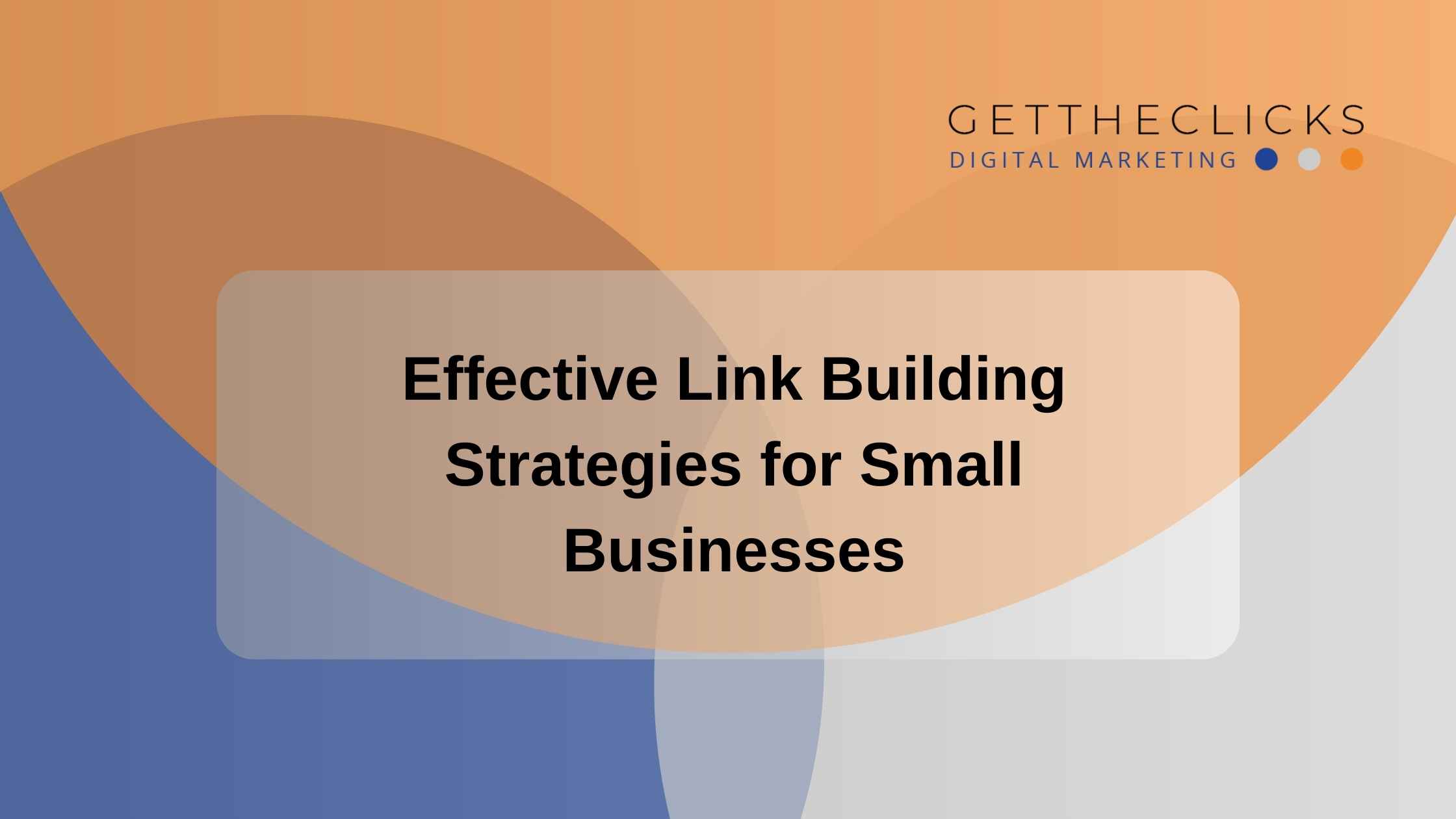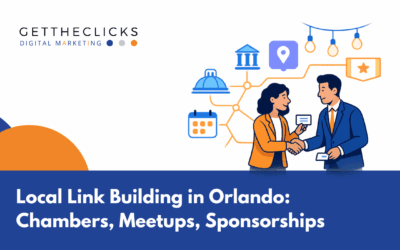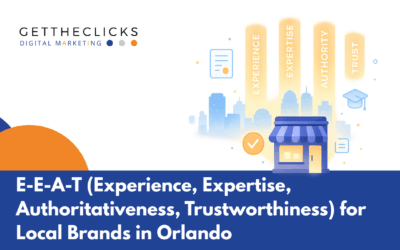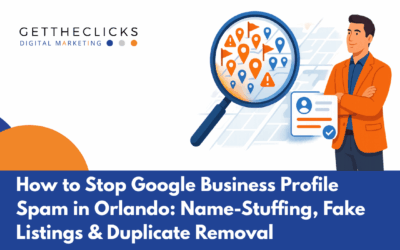In the world of SEO, few tactics spark more curiosity—and confusion—than link building. If you’re running a small business, you’ve likely heard that backlinks can boost your Google rankings. But what does that actually mean? Is link building still relevant today? And more importantly, how do you do it effectively without blowing your budget?
Let’s break it down in plain English, giving you a practical roadmap for how link building can work for you, not against you. These are some of the most effective link-building strategies for small businesses, especially when applied consistently and strategically, with insights drawn from what local seo experts have seen work time and time again.
Why Link Building Still Matters (Especially for Small Businesses)
At its core, link building is the process of getting other websites to link back to yours. These backlinks act like endorsements in the eyes of search engines. The more high-quality links pointing to your site, the more trustworthy and authoritative your business looks, digitally speaking. A healthy link profile can significantly increase your visibility in local search results and beyond.
But is link building still relevant today? Absolutely. Search engines like Google continue to use backlinks as one of the top signals when determining how to rank pages. For small businesses trying to compete in crowded markets, smart link building can mean the difference between being buried on page three and proudly standing at the top of the search results. A well-thought-out link-building plan can help you outpace competitors’ backlink profiles.
Backlinks don’t just improve rankings—they drive referral traffic, establish brand trust, and build online visibility. In other words, they help people find and trust you before they click. That’s why investing in link-worthy content from quality links over low-quality links is crucial.
Quality Over Quantity: What Really Makes a Link Valuable?
Not all backlinks are created equal. In fact, getting the wrong type of link can actually hurt your SEO and potentially damage your backlink profile.
So what makes a backlink “high quality”? It boils down to three key factors:
- Authority: Is the site linking to you respected in its space? A link from a well-known publication or niche-relevant blog carries more weight than a random, low-traffic website. That’s why building links from authoritative websites should be part of your overall link-building strategy.
- Relevance: Does the content on that page make sense in relation to your business? A link should be topically aligned with your industry or offerings. Focus on gaining links from relevant sites and relevant websites to ensure quality.
- Traffic Potential: If people actually visit the linking page, there’s a good chance some of that traffic will flow to your site, too. That’s the power of relevant links from websites linking to your content.
Are you wondering if a link is hurting your SEO? If it comes from spammy directories, irrelevant blogs, or sites that exist purely to sell links, it might be dragging your site down instead of lifting it up. Avoid broken links and low-quality links that can derail your efforts.
Build the Foundation Before You Build Links
Here’s the truth: no link-building strategy will work if your site isn’t worth linking to. Before you even think about outreach, your own website needs to be solid from the ground up. That includes strong internal links, optimized anchor text, and secure backlinks.
Start with your technical SEO. Your site should load quickly, be mobile-friendly, use HTTPS for security, and offer a clean, intuitive navigation experience—otherwise, both users and search engines will bounce.
Next, focus on content quality. You need to publish content that is helpful, unique, and genuinely useful to your target audience—something that stands out from the noise. High-quality content earns high-quality backlinks.
Think about link-worthy assets. These could be detailed guides, local resource pages, product comparisons, or even interactive tools—anything that provides value and gives others a legitimate reason to link back. This approach to creating content is central to effective link-building strategies.
In short, great content comes first. Once your site is polished and your content is worth sharing, your link-building efforts will start to deliver real, lasting results. Visual content also helps attract links and build relationships with readers and site owners.
This article, Why Internal Linking Matters for Local Businesses, provides a deeper dive into optimizing your site’s internal structure.
Scalable Link Building Tactics That Actually Work
Now that you’re ready to attract links, let’s dive into the most effective, scalable strategies that small businesses can actually use, without needing a giant team or a hefty budget. These represent some of the best link-building strategies currently available.
1.Local Citations and Directory Listings
One of the simplest (and most overlooked) tactics is getting listed in local and niche directories. Depending on your field, think of sites like Yelp, Google Business Profile, and industry-specific platforms like Houzz or Avvo. Local listings and niche-specific directories can dramatically improve local SEO.
These aren’t just easy backlinks—they help with local SEO visibility and build legitimacy with users and search engines. Just avoid low-quality, irrelevant directories that exist solely to manipulate rankings. Use local business directories and target local businesses to increase relevance.
2.Strategic Guest Posting
Yes, guest posting is still alive—and it works when done correctly. The goal is to publish valuable content on websites relevant to your niche, not just any blog that accepts posts. These guest posts should support your brand naturally without keyword stuffing.
Start by identifying sites your target audience actually reads. When you pitch, keep it professional and personalized. Don’t push your product—offer genuinely helpful insights. A well-placed guest post can bring authority, referral traffic, and a backlink all in one shot. Guest blogging is also a great way to build relationships.
3.Digital PR and News Mentions
Ever wonder how small businesses end up quoted in Forbes or local news stories? It’s often done through free tools like HARO (Help a Reporter Out) or by following #journorequest on X (formerly Twitter). This is a modern take on broken link building, where you find link opportunities through brand mentions or missing citations.
Journalists need expert quotes, data, and insights. If you position yourself as a helpful source, you can earn powerful, organic backlinks without begging or link swapping. Links from news sites are incredibly valuable backlinks.
4.Partner and Supplier Links
If you work with vendors, distributors, or business partners, you can earn a link from their website. Maybe they have a partner directory, a case study section, or a client spotlight.
It’s completely ethical to ask, as long as the relationship is genuine and the link makes sense contextually. Just avoid quid-pro-quo arrangements that violate Google’s guidelines. Use contact forms to initiate these partnerships if needed.
5.Content-Driven Link Earning
Some of the best backlinks are earned passively, thanks to linkable assets you publish on your site. Think original statistics, industry reports, calculators, or resource hubs.
This content naturally attracts links, especially when it’s cited by journalists, bloggers, or industry analysts. It takes more upfront effort but pays off with sustainable SEO growth. This is the foundation of effective link-building strategies and e-commerce site owners alike.
Avoid These Link Building Pitfalls
Some link-building tactics might seem like shortcuts to faster rankings, but they can actually lead to penalties from search engines. Google is smarter than ever, and cutting corners can seriously damage your visibility. Poorly executed resource page link building can do more harm than good.
Buying backlinks might promise quick wins, but it’s one of the fastest ways to get flagged. Purchased links are often placed on low-quality or irrelevant sites, which can send negative signals to search engines.
Participating in private blog networks (PBNs) is another red flag. These networks are built solely to manipulate rankings, and Google’s algorithms constantly target and devalue them.
Link exchanges that feel like “I’ll link to you if you link to me” may seem harmless, but they can be seen as manipulative if they’re not natural or relevant. Google expects links to be earned, not traded for the sake of SEO.
Over-optimized anchor text is another common mistake. Using exact-match keywords too frequently in your links can appear spammy and trigger algorithmic penalties.
Spamming blog comments or forums with links doesn’t help your SEO—it can actually hurt your reputation. These low-effort tactics often result in links from irrelevant or unmoderated sites, which provide no value and may get disavowed. Instead, focus on earning dofollow links from resource page placements on relevant sites.
Ultimately, if a link strategy feels like a gimmick or a loophole, it’s probably a risk. Focus on building real relationships and valuable content—that’s what earns lasting, penalty-proof backlinks.
How to Measure Link Building Success
So how do you know if your link building is working? It’s not just about the number of links—it’s about the quality, impact, and consistency. Here are the key indicators to track:
- Domain Rating (DR) or domain authority (DA) are third-party metrics from tools like Ahrefs and Moz. While Google doesn’t use them directly, they’re helpful for benchmarking your site’s perceived authority compared to competitors and tracking improvement over time.
- Referral traffic measures how many visitors are landing on your site via those backlinks. If your links are placed on relevant, high-traffic sites, you should start to see steady streams of visitors in your Google Analytics reports.
- Link velocity refers to the rate at which you’re gaining new backlinks. A natural, steady growth pattern is ideal—sudden spikes or drops can look suspicious to search engines and may impact your rankings.
- Anchor text diversity is about how the clickable text in your backlinks is written. Overusing exact-match keywords can raise red flags, so aim for a healthy mix of branded, generic, and descriptive anchors that reflect natural language.
Tools like Ahrefs, Google Search Console, and SEMrush are essential for tracking your backlink profile. They help you spot new links, identify toxic ones, monitor anchor text trends, and keep your link strategy on the right path. Competitor backlink analysis is also a helpful tactic.
Overcoming the Small Business Link Building Struggles
You might be thinking, “This all sounds great, but I don’t have a big team or budget.” That’s a valid concern—and one many small businesses share.
As a digital marketing agency here are some of the struggles we have seen many small businesses face:
- Limited Time: When you’re wearing multiple hats, link building often ends up on the back burner. That’s why it’s important to focus on low-effort strategies that still deliver results.
- No Internal SEO Experts: Hiring an SEO agency or expert isn’t always feasible. Instead, lean on proven, straightforward tactics and free educational resources to guide your efforts.
- Fewer Industry Connections: Earning backlinks can seem like a dead end without an existing network. However, you can build credibility through local partnerships, vendor relationships, and niche communities.
Here are some of the strategies we recommend to overcome these struggles:
- Prioritize Local and Partner-Based Links: These are often the easiest and most impactful to secure. Listings on local directories and links from suppliers or collaborators require minimal outreach and offer high SEO value. Local link building through local events or local bloggers can help.
- Repurpose Content into Guest Posts and Press Quotes: You don’t need to create new content from scratch. Repackage your existing blog posts or insights into guest contributions and expert quotes to reach wider audiences.
- Set Up Google Alerts or HARO: Tools like HARO and Google Alerts can surface link opportunities passively. Just respond when relevant media requests pop up—it’s free, and it works.
- Use Free Tools and SEO Extensions: SEO research doesn’t have to be expensive. Browser extensions like MozBar, Ubersuggest, and Google Search Console offer useful insights without the hefty price tag.
Even just one high-quality backlink a month can make a big difference over time. Consistency beats intensity—especially when you’re building smart with limited resources.
Why Partnering with a Digital Marketing Agency Matters
At Get The Clicks, we know firsthand how tough it can be for small businesses to juggle everything, especially regarding SEO and link building. We’ve worked with business owners who wear a dozen hats and still try to figure out Google’s latest update. If that sounds like you, just know you don’t have to go it alone. Whether you need help building a strategy, finding the right link opportunities, or just figuring out where to start, we’re here to help. No pressure, no pushy sales—just honest guidance from a team that genuinely wants to see your business grow.
Boost Your Rankings with Get the Clicks
Ready to take your SEO to the next level? Contact us and we’ll help your business build powerful, high-quality backlinks that drive real results. Let’s grow your visibility—one strategic link at a time.





